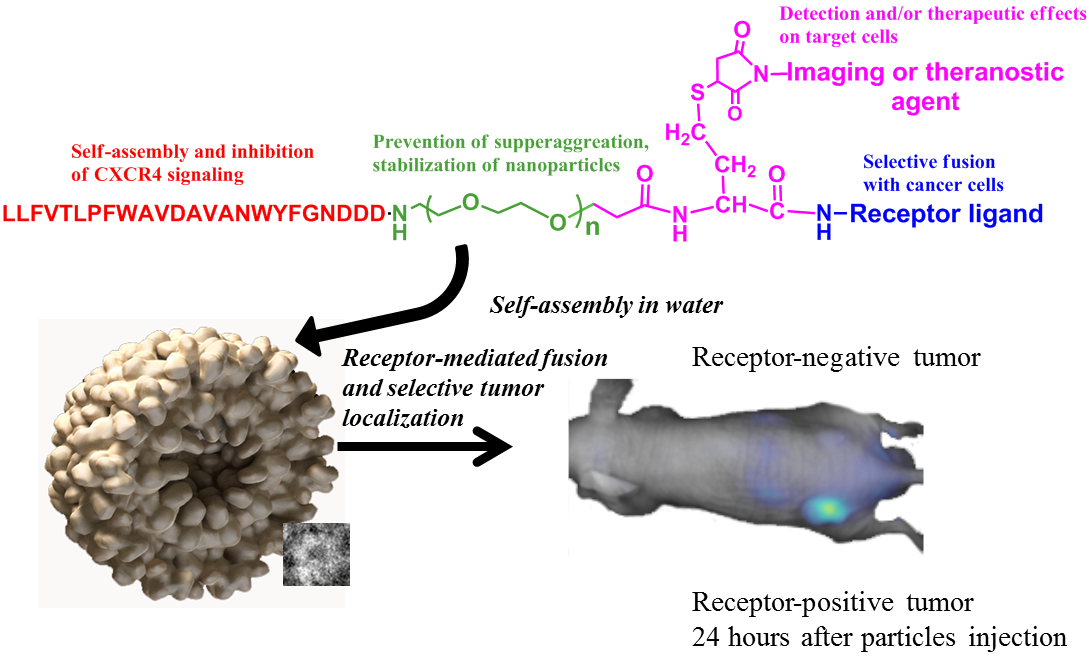Self-Assembling Nanoparticles Composed of Transmembrane Peptides and Their Application for Specific Intra-Tumor Delivery of Anti-Cancer Drugs
Peptides corresponding to transmembrane domains of a number of integral proteins were discovered to spontaneously self-assemble in aqueous solutions into stable and remarkably uniform nanoparticles. Researchers at the NCI’s Cancer and Inflammation Program have developed fully synthetic, peptide-based, virus-like nanoparticles capable of delivering cytotoxic, radioactive, and imaging agents.
Structure and function of tumor-target self-assembling particles:

The current invention discloses peptide based fusogenic virus-like nanoparticles that can be targeted to tumors. The nanoparticles have a diameter of 8-10 nm and, being much smaller than a liposome, demonstrate better tumor penetration. The body of the nanoparticle is comprised of a G-protein coupled receptor or an ABC transporter antagonist. The technology solves the problem of delivering therapeutic, theranostic and imaging agents – and is an alternative to liposome-based nanoparticles.
Nanoparticles constructed from transmembrane domains of certain receptors and transporters have their own biological activity. They inhibit metastasis, reduce inflammation or reverse drug resistance thus sensitizing tumors to therapy. Particles allow for easy attachments of tumor-selective ligands, therapeutic agents and can encapsulate hydrophobic drugs – thus addressing the problem of selective tumor delivery.
Competitive Advantages:
- Alternative to liposome-based nanoparticles.
- Promising biocompatibility profile
- Potential to target numerous cell types and receptors, whose clinical relevance may vary between individuals.
- Avoids the costly and impractical approach of developing numerous treatments for every specific cell type and receptor.
- Superior in stability, uniformity, ease and reproducibility of preparation compared to conventional liposomes.
- Much more uniform and less toxic than inorganic, polymeric or dendrimeric nanoparticles.
- The nanoparticles are much smaller than a liposome thus providing better tumor penetration.
- Synthetic nanoparticles can be easily coated with receptor ligands and loaded or derivatized with cytotoxic drugs for specific tumor targeting. Nanoparticles have biological activity of their own and can inhibit metastasis (CXCR4 receptor antagonists) or drug resistance (inhibitors of ABCG2 transporter and p-glycoprotein) thus sensitizing tumors to therapy.
Commercial Applications:
- Self-assembling nano-particles as an alternative to liposomes, inorganic, dendrimeric or polymeric nanoparticles.
- Targeted anti-cancer agent
- Personalized medicine
- Drug delivery
- Theranostic tool
- Tumor imaging agent
